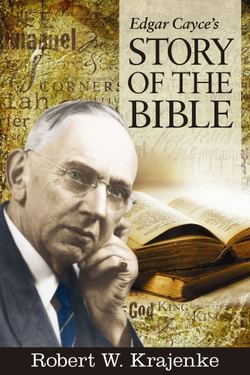Читать книгу Edgar Cayce's Story of the Bible - Robert W. Krajenke - Страница 23
На сайте Литреса книга снята с продажи.
Adam
ОглавлениеIn Genesis 1, God said, “Let us make man”—creation by Divine Fiat, or through the Word. In Genesis 2, God “formed” Adam2 (or “man,” as in the King James and New American Catholic translations). The suggestion here is a manipulation of materials and an action in Time.
Most liberal interpreters agree “man” and “Adam” carry the same meaning, indicating the origin of mankind, and not an individual. Yet the Cayce readings show that both a literal and symbolic meaning apply. Adam represents a race,3 but is also an experience of one soul—the first Adam, who, through his incarnations in the earth, became the Savior of man, the last Adam—Jesus who became the Christ.
When there was in the beginning a man’s advent into the plane known as earth, and it became a living soul, amenable to the laws that govern the plane itself as presented, the Son of man entered the earth as the first man. Hence, the Son of Man, the Son of God, the Son of the First Cause, making manifest in a material body.
This was not the first spiritual influence, spiritual body, spiritual manifestation in the earth, but the first man—flesh and blood; the first carnal house, the first amenable body to the laws of the plane in its position in the universe.
5749-3
After man was formed, God “breathed into his nostrils the breath of life; and man became a living soul.” This is similar to the seventh day of creation when, the images being formed, God rested and allowed His spirit to flow into the pattern, animating His creation.
The following suggests new insights into this verse.
(Q) Please explain, “He breathed on them, and saith unto them, Receive ye the Holy Ghost.” (John 20:22)
(A) . . . As the breath of life was breathed into the body of the man, see, so breathed He that of love and hope into the experience of those who were to become witnesses of Him in the material world.
(Q) Does this verse have reference to the beginning as Adam?
(A) In the same manner of beginning, yes.
5749-10
. . . as the breath, the ether from the forces [that] come into the body of the human when born breathes the breath of life, as it becomes a living soul, provided it has reached that developing in the creation where the soul many enter and find the lodging place
3744-4
The following suggests a state of cosmic consciousness.
(Q) [Explain] the Holy Breath?
(A) . . . As we say, the All-Seeing Eye of God, the All-Seeing Eye of self can only be attained when in attune to God. And when attuned, he hath breathed the Holy Breath on the activity of the entity.
2533-8
The place of manifestation for this new race, and the individual soul of Adam, was in “a garden eastward in Eden.”
“Eastward” is the direction of the sun. Thus the location of the garden symbolizes a condition close to the source of all life. Both Man and the Garden were projections of the God-consciousness.
“Eden” is not important as a place, but as a condition, an expression of consciousness by souls in the earth. It was the material experience of many and a record of it has been left in all parts of the world.
And out of the ground the Lord God made to grow every tree that is pleasant to the sight and good for food; and the Tree of Life also in the midst of the Garden, and the Tree of Knowledge of Good and Evil. (Genesis 2:9)
The Garden is a literal truth, an actual state and condition of the world at one time, but is also symbolic of man’s body. Later the body is referred to as “the Temple” by teachers such as Jeremiah, Paul, and John. Jesus referred to his own body as “The Temple.” (John 2:21) But in the beginning it is called “the Garden.”
The existence of the Tree of Knowledge indicates the probability from the beginning of the perfect man’s separation from the Source. The Father-God was aware of the possibility, yet did not know if, how, or when it would happen until the soul, by its own choice, caused it to be so.
We recall at this point that Joshua was aiding Moses in the composition and interpretation of this myth.
The two Trees are reflected in the two principles he later voiced in his great statement, so often quoted in the readings:
There is set before you good and evil, life and death, choose thou this day whom you will serve. As for me and my house, we will serve the Living God. (Joshua 24:15)
These two principles of spirit still exist, as they did in the beginning. A soul can choose consistently to eat from the Tree of Life, and thus maintain his connection to the Source; or use his existence to experience the things of the world in a manner which gives him knowledge, yet results in separation and eventual death of the Spirit within.
Death does not come in a moment, or even in an epoch, but if the soul continues to sin, continues ‘to eat,’ then it reaps its karma from the laws of cause and effect.
It was six hundred years before Adam died.
And again He has said, as He showed the way, as He fulfilled in giving His life, “In the day ye eat thereof ye shall surely die.” Yet the tempter said, “Not surely die,” for it may be put off; and it was—six hundred years—and yet death came, the pangs of the loss of self.
3188-1
